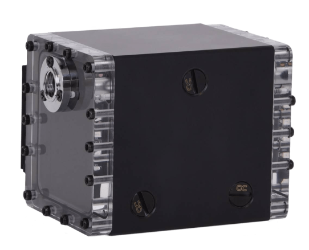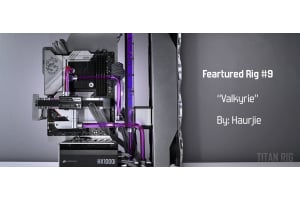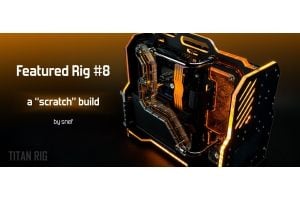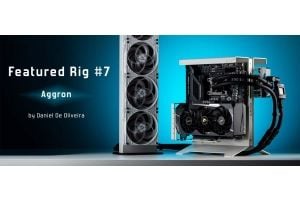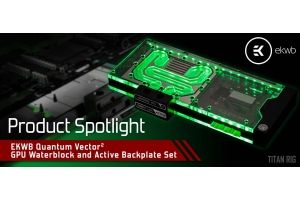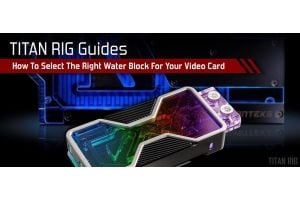2-Day Expedited Shipping Only $14.95 - See Restrictions
Water Cooling Components - Reservoirs
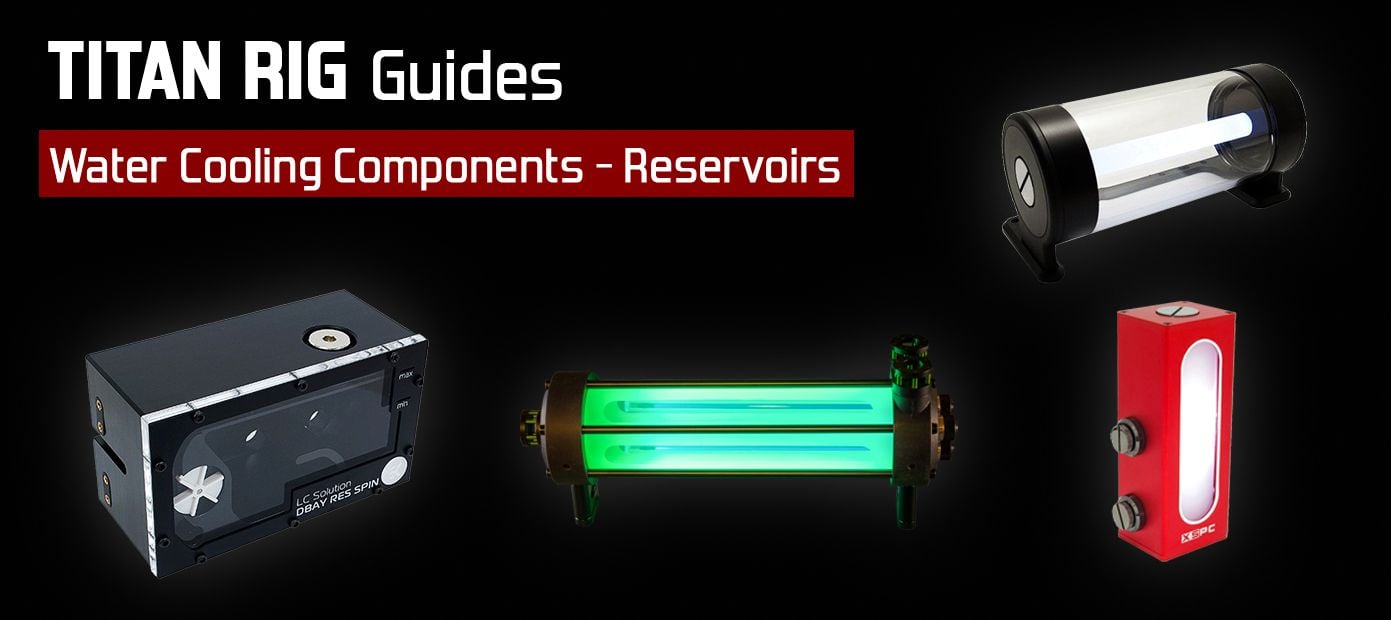
Welcome back to the Component Series. We hope to help builders both new and old to understand their options when it comes to the components in their custom water loops. Today’s installment is all about reservoirs.
Why A Reservoir?
The reservoir in your custom water cooling loop serves multiple functions. It’s a holding tank for your coolant, a direct fluid supply for your pump, and an aid for filling your loop and bleeding the air out of it afterward.
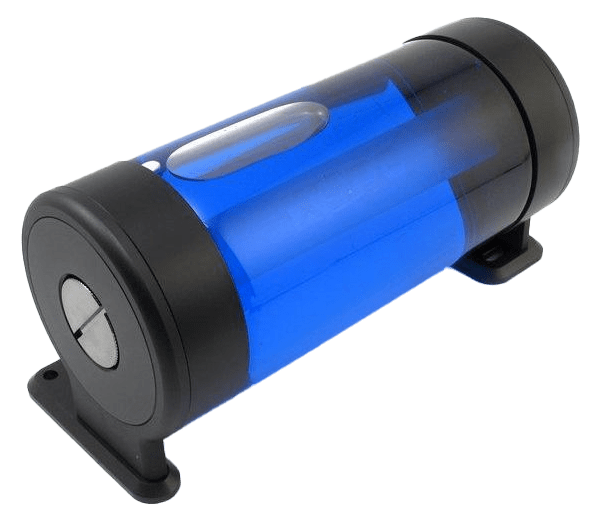
Photon 170 tube reservoir with glass tube from XSPC.
Holding Tank - The most obvious function of the reservoir is a holding tank for your coolant, but there are a few other benefits.
Pump Coolant Supply – One of the most important reasons to include a reservoir in your cooling loop is to feed coolant directly to your pump. Today’s water cooling pumps are amazing pieces of engineering, but they are designed to *never* run dry. By placing your pump directly downstream from the reservoir you can insure a constant steady supply of coolant.
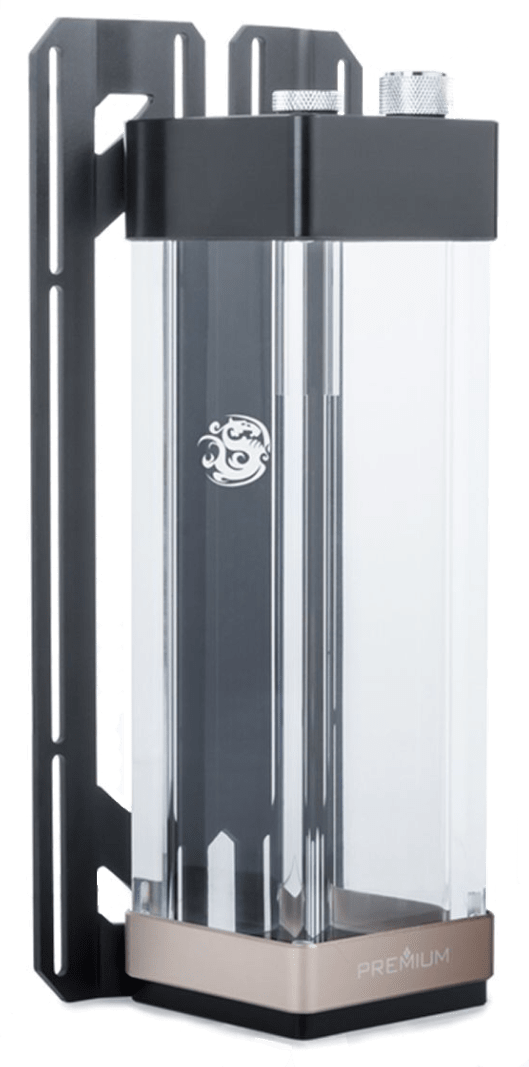
Square reservoir from Bitspower – removable end caps define this as a tube reservoir rather than a tank.
Filling Aid – Filling a water loop with a reservoir is much easier than filling one without. The holding tank aspect comes in handy here, as you have a dedicated and unobstructed place to add coolant to the system.
Air Removal – When you finish building your custom water cooling loop all the components and tubing are full of air. When you fill the system with coolant, it displaces the air. Bubbles are a common issue with a newly-filled water cooling loop – they can get trapped in various areas of the system and even recirculated by the pump.
A reservoir helps to remove the air by trapping it inside. As water and air bubbles enter the reservoir, the bubbles rise to the top of the reservoir naturally. The outlet of your reservoir should be on the lower portion, thus separating air bubbles and water.
So we know that a reservoir has several advantages. How do you decide which one to use in your system? There are more things to consider when choosing a reservoir than you may have thought.
Type
Reservoirs come in several different forms. Deciding which type of reservoir will work best for your custom water cooling loop is one of the first decisions to make.
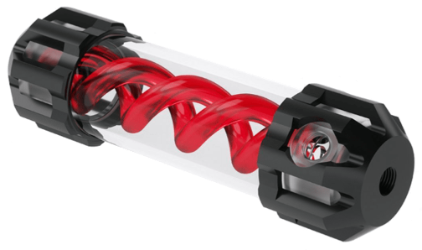
Tube reservoir with colored acrylic spiral insert.
Tube – The classic tube reservoir is a simple tube with a cap on each end. Tube reservoirs come with different numbers of ports on each end in different orientations. Likely the most versatile type, the tube reservoir can be mounted in many ways and locations and is available in the widest range of sizes. The end caps on many tube reservoirs are also interchangeable.
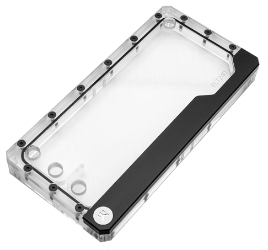
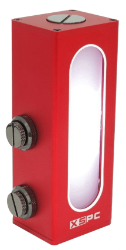
Tank reservoirs can take many different forms.
Tank – Tank reservoirs are non-cylindrical, typically square in shape but also available as hexagons from some brands. Tank reservoirs offer nearly as many mounting options as tubes, but without removable caps the port count and orientation can’t be changed.
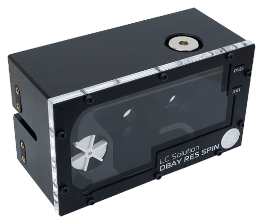
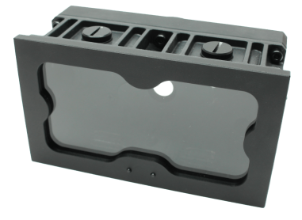
Bay reservoirs offer the convenience of mounting in a predetermined space.
Bay – Bay reservoirs are designed to fit into 5.25” external drive bays in a PC case, and are made in both single-bay and dual-bay configurations. Bay reservoirs offer a clear view of the system’s coolant from the front of the PC.
Keep in mind that today’s PC cases typically come without 5.25” external drive bays. Because of this, bay reservoirs are being phased out of product lineups from most manufacturers.
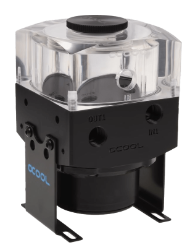
Pump top reservoirs are one of the most convenient type of reservoir.
Pump Top - Pump top reservoirs are add-ons designed to fit a specific pump such as the DDC or D5. They serve the role of both pump top and reservoir, making them especially useful in small form-factor systems. They come in a wide range of sizes, from full-sizes tubes to tiny caps.
Materials
Today’s reservoirs are almost all made from one of three materials: acrylic, acetal or glass. Each has its own merits.
Acrylic is crystal clear and inexpensive, but scratches easily and can crack with stress.
Acrylic - Acrylic is the most common material used in today’s water cooling reservoirs. It offers transparency and low price. The primary drawback to acrylic is its brittleness. Overtightening a fitting or connector can cause stress cracks.
Acetal (or POM) won’t crack and hides scratches well but is opaque.
Acetal - Acetal is the least common material used for water cooling reservoirs, likely because it’s opaque and more expensive than acrylic. Softer and more malleable than acrylic, acetal will not crack with pressure, but care must be taken when inserting fittings and connectors - threads in acetal are easily damaged.
Glass is an excellent material for reservoirs – crystal clear and stronger than either acrylic or acetal.
Glass - Glass reservoirs are more expensive than the other two options but offer superior clarity and strength.
Be aware that parts of a reservoir other than the main body, such as the end caps on a tube reservoir, can be made of different materials. Acrylic tube reservoirs with aluminum end caps are an example. Be sure you know what all the materials are that you’re using, especially materials that will contact the coolant itself.
Size Matters
The size of a reservoir will affect some of its functions. Air removal is easier with a larger reservoir, for example – the distance between the intake ports and the outflow ports is large enough to allow the incoming air bubbles to rise to the top before being sucked out into the pump.
A reservoir of any size functions as a heat sink also. The heat from your PC is absorbed by the water and removed from the water by the radiator. Since all the heat can’t be removed, the water gradually warms up until an equilibrium is reached. The more water in the system, the more heat can be absorbed and the longer that takes. This is only relevant at the beginning of a usage cycle – once that equilibrium is achieved, a large reservoir will perform the same as a small one. It simply takes longer to reach that point with more fluid.
Another benefit of a larger reservoir is the safety margin. In any closed water cooling system, the water level can only drop so far without causing problems – overheating or even pump failure. The more water is in the system to longer it takes to reach that point.
Smaller reservoirs are easier to work with and offer more options on placement and mounting as well as lower cost.
Accessories
When you’re considering which reservoir to use for your next water cooling loop, the accessories available for a specific reservoir may help make the decision.
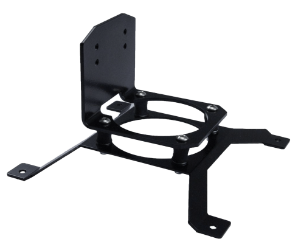
Reservoir mounts – some are flexible in their use but others are made for a very specific purpose.
Mounts – Mounts are available for specific reservoir types, with many able to function on different kinds or sizes of reservoir. Be sure that any reservoir you’re considering has a way to be mounted where you want it.

Reservoir lighting can be accomplished with lights both outside the reservoir and submerged in the coolant.
Lighting – While many of today’s reservoirs offer built-in lighting, many don’t. If lighting is important to you, look at the lighting accessory options available for whatever reservoir you’re considering.
While a reservoir isn’t strictly necessary in your custom water cooling loop, they offer several benefits. The variety of reservoirs on the market today will let you enjoy the benefits while improving the overall look of your PC at the same time.


